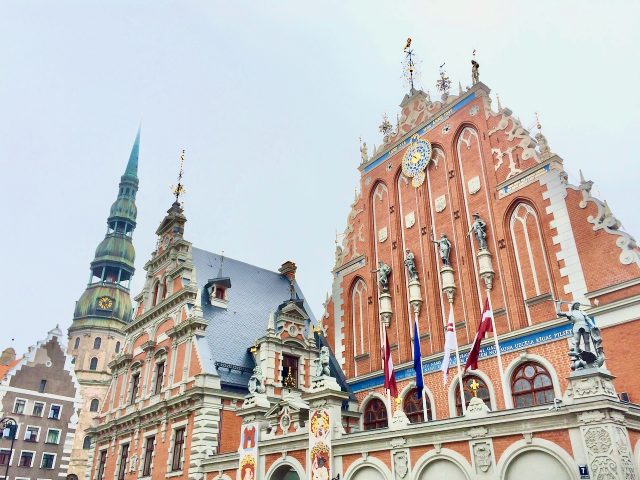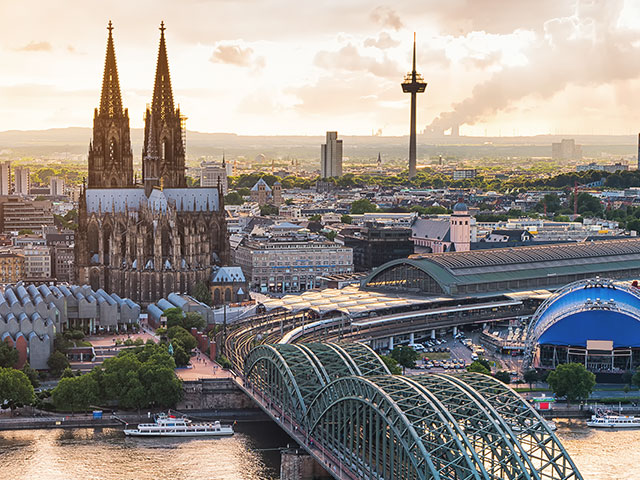 Paderborn (Paddaboan in Low German) is
a 150,580
inhabitants city located by river Pader (only 4 km long, shortest in Germany) in the northeastern part of North Rhine-Westphalia, part of Westphalia region. It is home of Paderborn University, one of the fourteen public research universities in the state of North Rhine-Westphalia.
Paderborn (Paddaboan in Low German) is
a 150,580
inhabitants city located by river Pader (only 4 km long, shortest in Germany) in the northeastern part of North Rhine-Westphalia, part of Westphalia region. It is home of Paderborn University, one of the fourteen public research universities in the state of North Rhine-Westphalia.How do I arrive to Paderborn?
- Train: there are often trains to important destinations within NRW like Soest (aprox. 30 minutes), Detmold (aprox. 40 minutes), Bielefeld (aprox. 1 hour), Dortmund (aprox. 1 hour 10 minutes), Essen (aprox. 1 hour 30 minutes), Münster (aprox. 1 hour 25 minutes) or Düsseldorf (aprox. 2 hours). From Soest there are frequent trains to places like Paderborn (aprox. 40 minutes), Dortmund (aprox. 45 minutes) or Münster (aprox. 50 minutes).
- Bus: there are buses to many cities in NRW state.
- Car: if you rented a car from Paderborn it can be reached Bielefeld and Detmold (aprox. 40 minutes), Soest (aprox. 50 minutes), Dortmund (aprox. 1 hour 15 minutes), Münster (aprox. 1 hour 40 minutes), Düsseldorf (aprox. 2 hours) or Cologne (aprox. 2 hours 10 minutes). It can be reached from places in other German regions like Osnabrück (aprox. 1 hour 10 minutes) in Lower Saxony and Kassel (aprox. 1 hour) in Hesse.
History
What can I visit in Paderborn?
- Paderborn Catholic Cathedral (6:30-19 Mon-Sat, 6:30-19:30 Sun): 13th century Gothic Dom that was born as a Romanesque church and rebuilt to change its artistic style. Some of the most important points are Dreihasenfesnter (a window in the cloister with an unique trompe-l'œil with three hares), the major altarpiece and Dietrich von Fürstenberg's tombs, a 16th century prince-bishop of Paderborn. It also has one of the largest crypts in Germany with the tomb and relics of St. Liborius and home of the Archdiocese of Paderborn.
- Paderborn Diocesan Museum (10-18 Tue-Sun; 4€/ 2€/ 1.50€ adults/ reduced/ students and kids): Art-Nouveau building that hosts a large collection of sacred art belonging to the Diocese of Paderborn. Its most important pieces are the famous Liborius altarpiece (1627) or the lime wood image known as Imad Virgin (11th century).
- Paderborn Town Hall: nice building from 1616 with typical Weser Renaissance architecture.
- Jesuiten Catholic Church (10-12 Mon-Fri; free): basilica with a very beautiful Baroque style major altarpiece (copy of the original, destroyed during WW2) with a huge quantity of details in wooden and gold.
- Abdinghof Lutheran Church (11-18): austere church with two Romanesque style towers and a nice inside.
- St. Bartholomäus Chapel: only remain of Charlemagne's palace where he met pope Leo III, burnt in a fire in the 11th century and replaced by Ottonian-Salian Kaiserpfalz, a reproduction of the original book. This chapel from 1017 is considered the oldest temple north of the Alps and has very good accustics.
- LWL-Kaiserpfalz Museum (10-18 Tue-Sun; 4.50€/ 2.50€ adults/ reduced): museum with an exhibition with around 500 finds of Charlemagne's years like remains of frescoes or drinking containers.
- Paderquellgebiet: relaxing park with the 300 Pader river's springs.
- German Tractor and Model Car Museum (10-18 Fri-Sun; 8€/ 6€ adults/ reduced): museum about agricultural technology from past decades with over 100 tractors from major German manufacturers such as Lanz, Hanomag, Deutz, MAN, Porsche, Eicher and Schlüter.
- Heinz Nixdorf Forum Museum (9-18 Tue-Fri, 10-18 Sat-Sun; 8€/ 5€ adults/ reduced): museum that explores more than 5,000 years of communication from cuneiform to cyberspace, founded by Nixdorf's founder, a company part of Diebold Inc. It has objects that used to be the most advanced technology in their time like a reproduction of ENIAC or a 1940 vacuum tube computers created for the US Army.
- Neuhaus Palace (14-18 Tue-Fri, 10-18 Sat-Sun; 2.50€/ 2€/ free adults/ reduced/ people under 12): 17th century Schloss with Weser Renaissance style built for the prince-bishop of Paderborn during the reign of Erich von Braunschweig-Grubenhagen with a Baroque garden in 1736. In the surrounding area there's a very nice park and two museums: Paderborn History Museum (10-18 Tue-Sun; 2.50€/ 2€/ free adults/ reduced/ people under 12) and Paderborn Nature History Museum.
 |
| Neuhaus Palace |
 |
| Paderborn Catholic Cathedral |
 |
| St. Patrokli Catholic Church |








 09:44
09:44
 Banknotemaniac
Banknotemaniac
 Posted in:
Posted in: